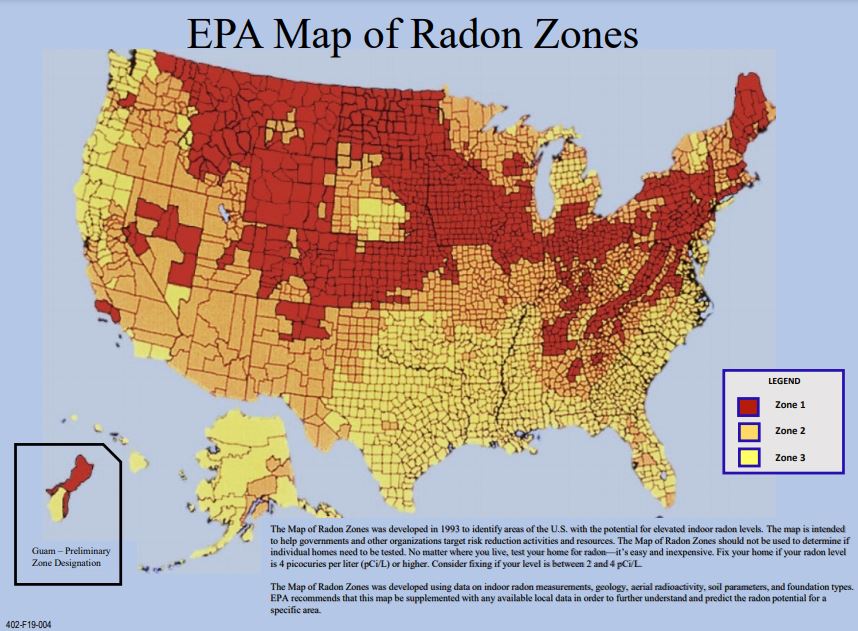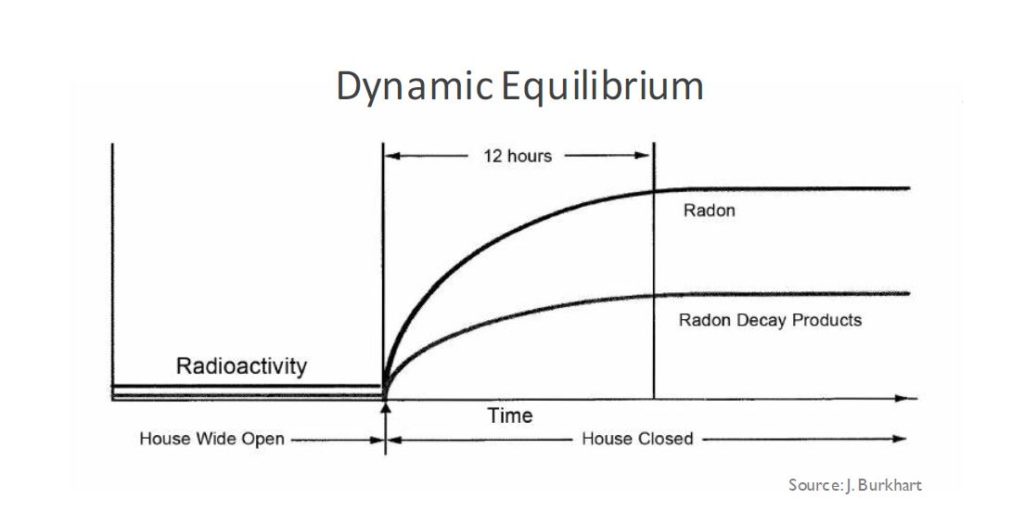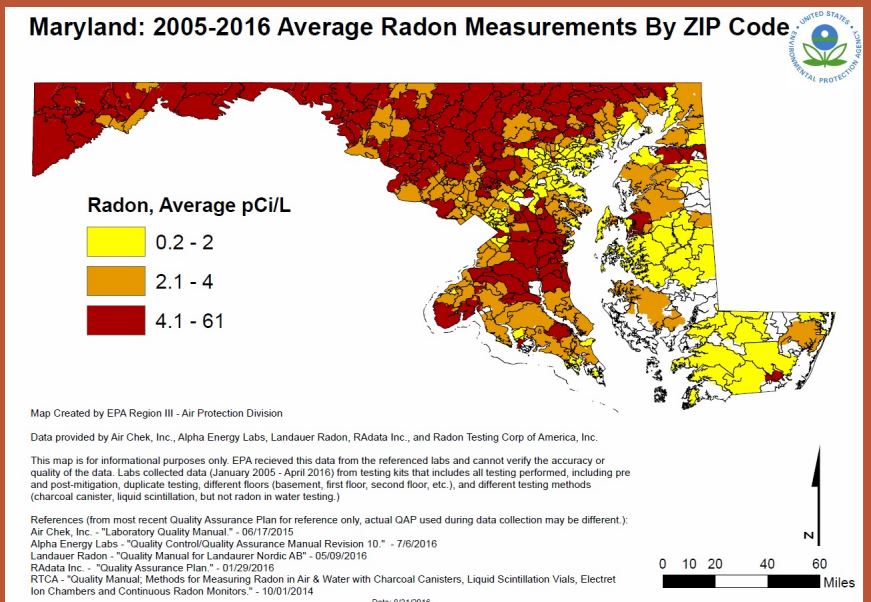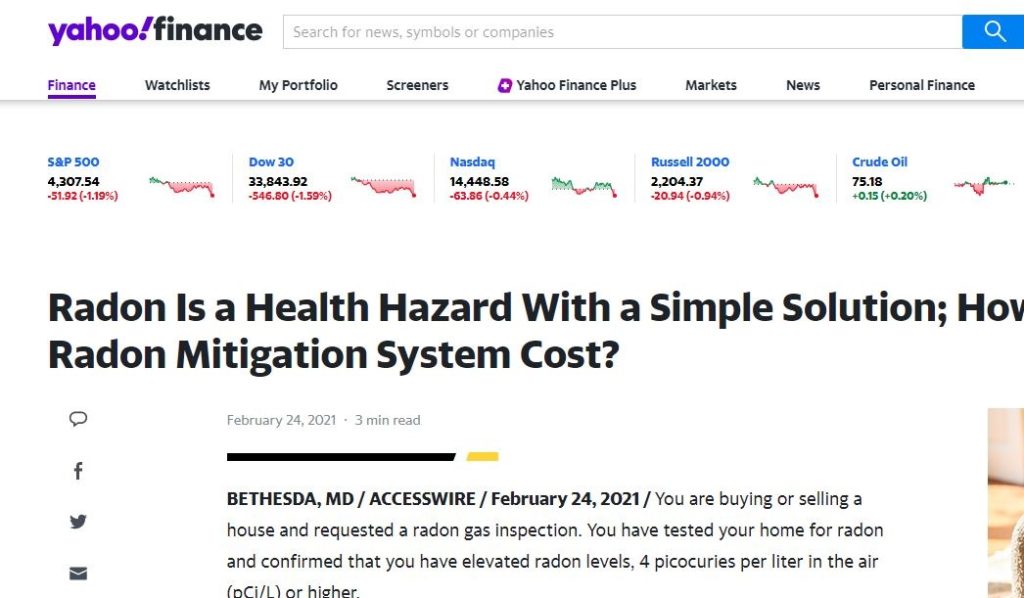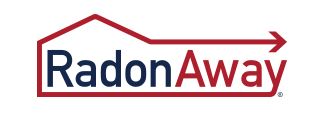7 Simple (But Important) Things To Remember About Radon Testing Kit
- Written by: Kate Holder
- Category: Uncategorized
- Published: September 14, 2021
Measurement outcomes Impacted by following things (avoid false low or false high results):
1.Closed Building Conditions Rule. Radon gas is constantly decaying and re-occurring. It takes only 12 hours to reach Dynamic Equilibrium , RDP levels to stabilize once the radon rate into a building has been altered (ex. open doors, windows).
Closed Building Conditions:
- Windows Must be kept Closed for duration of test
- Doors maybe be opened for momentary exit/entry only
- Normal HVAC settings 72 degree +/- 5 degree
2. Decay Factors is especially important in passive devices like radon testing kit. Passive charcoal devices(Activated Carbon) must be shipped to the lab for analysis. During this “transit” time (from home to lab),the radon that has adsorbed onto the charcoal continues. To decay. Therefore, Start/Stop times and prompt shipping is very important. Start/Stop times are important in all radon measurements because remember, 1.0 pCi/L of radon decays at 2.22 disintegrations per minute. If the start/stop times are incorrect, the overall average will be incorrect. And test will be VOID.
3. Weather Conditions. Do not test during Severe weather conditions. The national weather services defines a severe storm as a storm that generates wind of 58 mph and or 3/4 inch diameter hail. However IEMA and ANSI define sever storms or periods of sustained winds of 30mph or more. The 96 hours rule mandatory for short term measurements of less then 96 h must not be conducted during severe wind conditions.
4. Diurnal Cycles
5. Background Radiation
6.Thoron
7. Device Consideration
Which one Radon Testing Kit should I pick ?
Passive Device: Radon Testing Kit
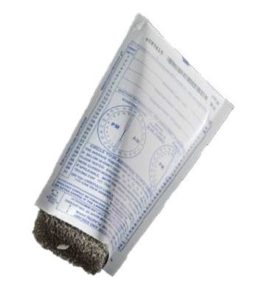
Activated Carbon (AC)
- Radon gas diffuses into the device
- Radon decays into RDPs
- sensitive to humidity and airflow
- sensitive to temperature
- RDPs adsorb onto carbon granules by molecular diffusion
- Gammas(RDPs) are measured (Bi214 and Pb 214)
- Exposed for 2-7 days
- Analyzed at the lab by weighing the device
- no tamper prevention
- must be returned to the lab FAST( if not analyzed promptly, radon and RDPs may decay beyond the LLD(lower limit of detection and test will be void.
- Results biased to last 12-24 hours of test

Activated Carbon (AC)
- Results biased to last 12-24 hours of test
- Sensitive to humidity and airflow
- 2-5 days test
- no tamper prevention
- must be returned to the lab FAST( if not analyzed promptly, radon and RDPs may decay beyond the LLD(lower limit of detection and test will be void.
- Sensitive to temperature
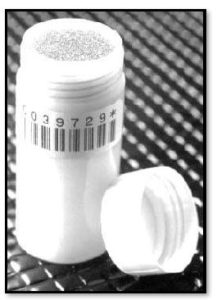
Liquid Scintillation Vials(LS)
- Alpha Scintillations
- Small vial with 4-5 grams of activated charcoal
- RDPs adsorbs onto Charcoal
- at the lab, charcoal is infused with liquid scintillation fluid
- must wait 4 hours before analysis can be done
- It takes 4 h for radon to equilibrate with its RDPS(Secular equilibrate)
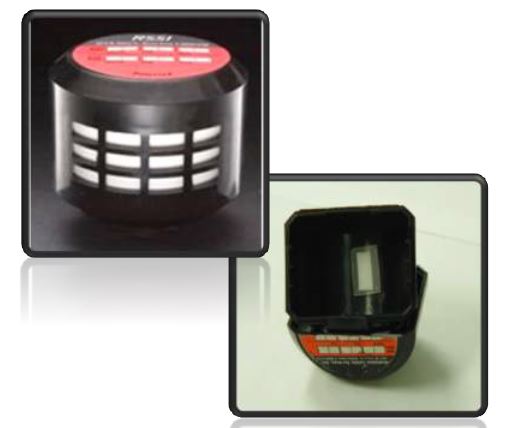
Alpha Track Detectors(AT)
- Alpha-sensitive plastic chip or film
- Filter allows only radon, not RDP’s, to passively diffuse into chamber
- RDPs emit alphas that pit the chip/film and leave tracks
- true integrated device
- Calibrated by tracks per unit area per pCi/L per day
- Not affected by temperature, humidity or airflow
- Analysis by lab
- Normal living conditions during test
- large precision error at low radon levels
- Low Sensitivity
- Long term 9o days to 1 year
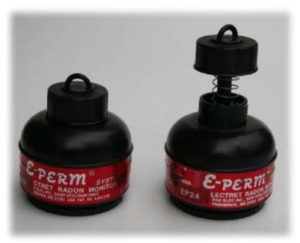
Electret Ion Chambers (ES-Short term 50cc, EL – Long term 200cc)
- Measures Alphas
- Radon Passively diffused into chamber ( Ion pairs created when RDP alphas kick out electrons from oxygen and nitrogen atoms
- onsite analysis, no need to send to the lab
- reusable electret reusable
- Not affected by temperature, humidity, air flow
- can be used to measure radon in water
- can be used for long term or short term radon testing
- sensitive to background gamma radiation
- electrets can lose voltage in storage
- you will need voltmeter
- high radon levels or long exposure may deplete electret beyond its capacity
Radon gas is measured in picocuries per liter (pCi/L)

